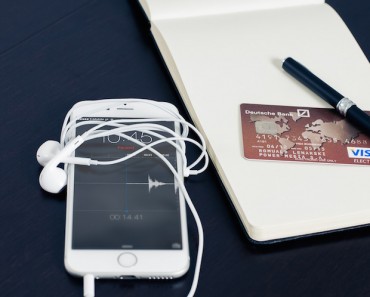If you have ever felt anxious, you know that it can be a very difficult feeling to overcome. Anxiety not only affects people mentally and emotionally, but physically as well.
For those who have not experienced it too many times before, know that this can be scary. Feeling anxious, and experiencing physical symptoms of anxiety like sweating, dizziness, disorientation and increased heart rate, can make someone feel even more anxious. The cycle continues.
Anxiety is not an easy thing to deal with, especially as an adult when you are expected to “go through the motions” even when you are not feeling well. Anxiety can be made even worse when someone feels pressured to act as if nothing is wrong when they are experiencing symptoms, which makes completing the tasks they are expected to complete an even bigger obstacle.
Luckily, there are several things those experiencing anxiety can do in the moment to reduce their feelings of overwhelming stress when they need to keep moving forward. Deep breathing is one of these things. It is quick and simple, can be done almost anywhere and actually works.
You can do this. You are stronger than your brain would like you to think. Reduce anxiety with this simple breathing exercise, so you don’t have to worry quite so much about how your anxiety might be affecting your performance at work, for example.
The exercise
The most frustrating part of dealing with anxiety is figuring out how to calm yourself down when you are at work or school or anywhere that involves other people. The first instinct of someone experiencing anxiety is to run and hide, but this isn’t always an option. Sometimes you have to stay put and manage as best you can, which is not fun, but entirely possible with practice.
This simple breathing exercise comes from Anxiety BC, and is a quick way to help reduce your anxiety when you need to pull yourself together and function as “normally” as possible. Anxiety is a legitimate mental health issue many people around the world face, but you can reduce and manage your symptoms on your own if you take the time to learn how.
- First, inhale slowly. Breathe in through your nose for four seconds. When you breathe, make sure you’re breathing all the way down to your belly button. This is why we call it “deep” breathing. Feel your diaphragm expand.
- After you breathe in for the first four seconds, hold in that breath for one to two seconds. Don’t breathe out yet; just hold it in.
- Next, exhale slowly through your mouth for four seconds. Feel your diaphragm contract. Actively push the air out slowly so that your diaphragm muscle actually contracts as you do so. This makes it less of a passive activity and will give you something to focus on for those four seconds you are breathing out.
- Wait about one to two seconds before you begin the breathing cycle over again. Anxiety BC recommends you complete about five of these deep breathing cycles per minute until you start feeling better, but you can take things as slowly as you need to and repeat the cycle as many times as you feel necessary.
What is important to note is that you should not be hyperventilating as you complete this exercise. The exercise itself is a way for you to prevent over-breathing, which is often why you feel lightheaded and a tingling sensation when you are anxious. Breathe slowly. Inhale, hold and exhale the air in your lungs for the amount of seconds suggested above for maximum effectiveness.
Also remember to breathe deep, all the way down past your belly button. You should be able to feel your diaphragm expanding and contracting and your chest rising and falling as you breathe in and out. This happens as you fill and empty your lungs with air, and doing it too quickly isn’t good news for your body.
You can practice this technique as often as you want, for at least five minutes several times per day to start. You don’t have to wait until you are feeling anxious to practice, either; practice while you’re watching T.V. or folding laundry if you want to. In fact, practicing while your mind is clear might even help you master the technique faster.
Practice this exercise as you would a simple meditation ritual. The more efficient you are at completing the above steps successfully and calming yourself down when you are feeling anxious, the better you will be able to handle yourself when stressful situations do arise and you need to handle them strategically.
Why it works
Deep breathing helps calm anxiety because it physically calms you down. Anxiety would be a completely different phenomenon if it didn’t have physical symptoms, which are the reason many people with anxiety are so debilitated by it. A racing heart, tense muscles and dizziness would make anyone feel like they should be in an emergency room instead of sitting at their work station.
Forcing yourself to take deep breaths not only slows your breathing, but also decreases your blood pressure, slows your heart rate and helps your muscles relax. Once a person feels more physically able to deal with the situation in front of them, they are much more likely to be able to process and rationalize their thoughts and emotions.
Here are a few more tips for different ways you can reduce any level of anxiety you are feeling today and focus on your responsibilities one at a time, if you are looking for an alternative to deep breathing or just in case it doesn’t work for you by itself.
Take a deep breath (or many consecutive deep breaths). The majority of the anxiety we feel is mentally blown out of proportion, and the best thing you can do for yourself right now is to slow down, calm down, come up with an action plan and pick yourself up and continue moving forward.







